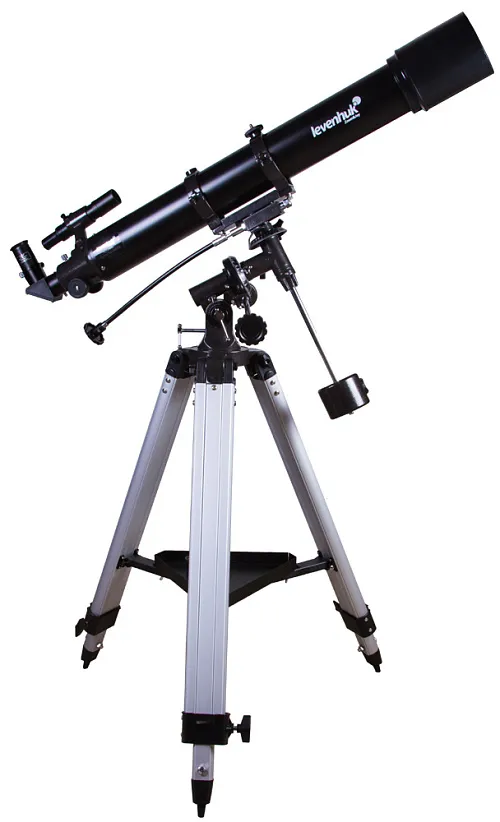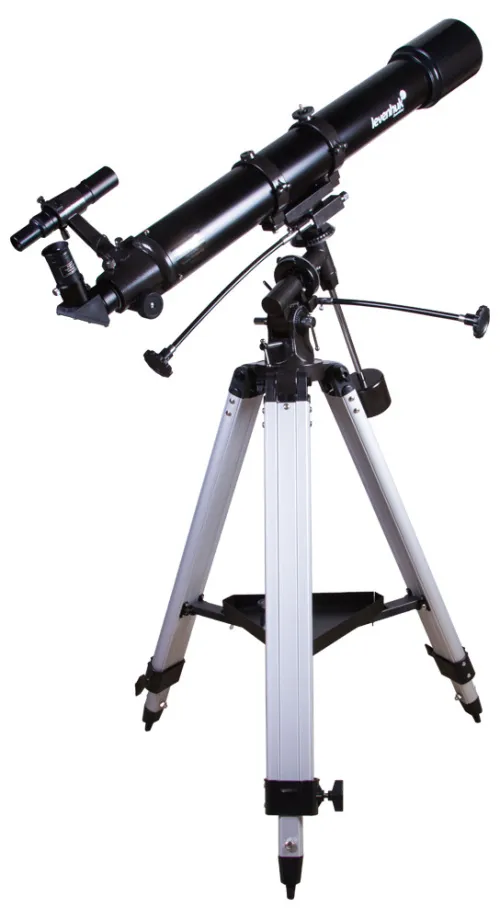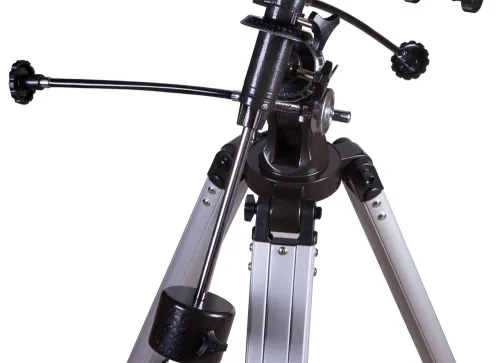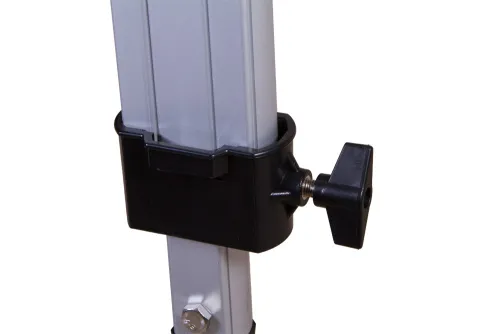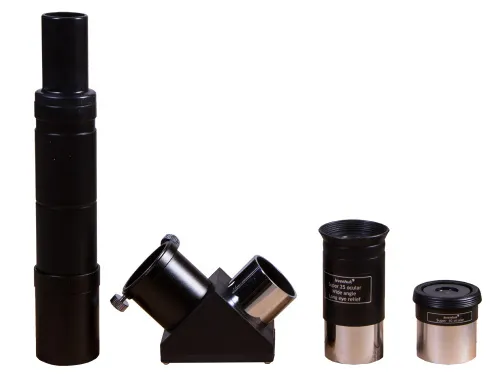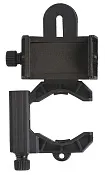Levenhuk Skyline 90x900 EQ Telescope
Refractor. Objective lens diameter: 90mm. Focal length: 900mm
| Product ID | 24297 |
| Brand | Levenhuk, Inc., USA |
| Warranty | lifetime |
| EAN | 0611901508955 |
| Package size (LxWxH) | 43x114x23 cm |
| Shipping Weight | 18 kg |
Levenhuk Skyline 90x900 EQ is a refractor with a large aperture. You will be able to see planets, double stars, globular clusters and diffuse nebulae. Uranus and Neptune appear in the form of small disks, but closer planets will be visible in more detail. For example, you will be able to distinguish Mars’ polar caps, the structure of sunspots and granulation on the Sun. Also, the telescope is good for lunar exploration if you want to see the craters. Under good conditions, all the Messier objects and bright NGC can be observed. The model is suitable for astrophotography.
Features:
- The telescope has a factory default adjustment and does not require additional and frequent adjustment;
- Contrast and sharp images in high resolution without chromatic aberration;
- Highly detailed pictures even at large aperture;
- Can be used for photographing the Moon and planets;
- Suitable for both terrestrial and astronomical observations;
- Ideal for planetary observations and observations of binary stars;
- Suitable for beginners.
The kit includes:
- Telescope optical tube (optical elements inside)
- SUPER 25 and SUPER 10 eyepieces
- Equatorial mount EQ2
- Aluminum tripod
- Diagonal mirror
- User manual and lifetime warranty
The equatorial mount, as opposed to an azimuth one, when being hovered compensates for the rotation of the Earth and allows more precise tracking of astronomical objects, keeping them within sight through the eyepiece. This mount is perfect for astronomical observations and indispensable for astrophotography. The aluminum tripod has adjustable height.
Two achromatic eyepieces SUPER 10 and SUPER 25 with a 31.75-millimeter (1.25-inch) diameter are included in the package and serve as powerful image correction tools. The optics used in the eyepiece are glass with a special coating. Field of view is 50–52 degrees.
| Product ID | 24297 |
| Brand | Levenhuk, Inc., USA |
| Warranty | lifetime |
| EAN | 0611901508955 |
| Package size (LxWxH) | 43x114x23 cm |
| Shipping Weight | 18 kg |
| Optical design | refractor |
| Optical scheme | achromat |
| Objective lens diameter (aperture), mm | 90 |
| Highest practical power, x | 180 |
| Aperture ratio | f/10 |
| Resolution threshold, arcseconds | 1.5 |
| Limiting stellar magnitude | 11.8 |
| Eyepieces | SUPER 10mm (90x), SUPER 25mm (36x) |
| Eyepiece barrel diameter, in | 1.25 |
| Finderscope | optical, 6x30 |
| Focuser | 1.25", rack & pinion |
| Tripod | aluminum |
| Tripod height (adjustable), mm | 710–1250 |
| Mount | equatorial |
| User level | elementary, beginners |
| Observed object | planets of the Solar System |
Convenient diagrams that describe how to install additional accessories on refractors and catadioptric telescopes
Find out how to assemble a telescope on an example of the Levenhuk Skyline 90x900 EQ telescope
This short guide will help you avoid typical mistakes and learn more about telescope and mounting types
The basics of astronomical observations for beginners
In this article we have gathered answers to some of the most frequently asked questions about telescopes
The most interesting celestial objects you can observe with Levenhuk telescopes
How telescopes work?
You can actually perform observations from your balcony!
All about telescope sizes, types, magnification, and mounts
Learn how to set up and use the telescope properly
Astronomy in light-polluted skies. Find out what you can observe in the city
Read an interesting comprehensive article on telescopes for little astronomers
The pictures are made with Levenhuk telescopes
Celestial objects you can observe with telescopes of different apertures
Colored and vivid images of galaxies, planets and star clusters entrance everyone who is fascinated by boundless space
Find an interesting review on the history of the changes to a refracting telescope
To make the process of choosing a telescope easier, we will tell you about the characteristics of the most popular types of telescopes today
Learn everything you need to know about refractor telescopes to make the right choice

